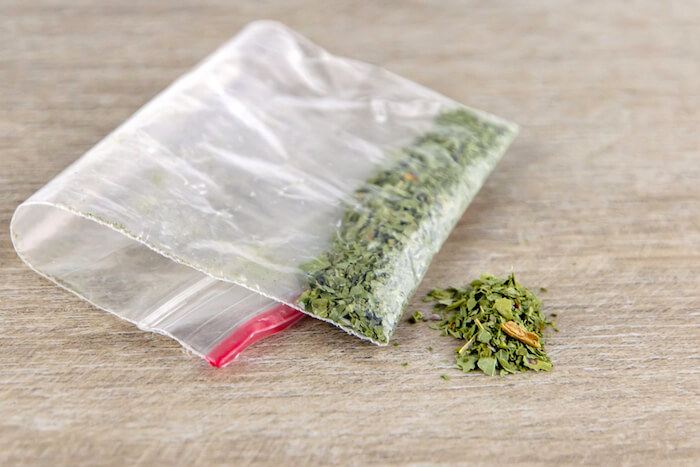Welcome to our informative post on club and party drugs. In this comprehensive resource, we’ll shed light on some of the most commonly encountered substances that have become an integral part of certain nightlife and partying scenes.
Whether you’re concerned about someone you care about or simply looking to broaden your knowledge, this post is designed to equip you with all you need to know about the most popular party and club drugs.
The Most Popular Club and Party Drugs
The ease of obtaining numerous types of designer drugs has changed the world of club and party drugs forever. There are literally hundreds of potentially dangerous substances that are now popular in these high-energy environments.
However, there are still a number of club drugs that have remained constant. Below are some of the most commonly used club and party drugs.
Ecstacy/MDMA
- What it is: MDMA, short for 3,4-methylenedioxymethamphetamine, is a psychoactive substance. MDMA triggers the brain to release large amounts of serotonin, norepinephrine and dopamine — chemicals that regulate mood, pleasure and perception.
- Street names: This party drug is commonly referred to as Ecstasy or Molly.
- Effects: Users under the influence of MDMA experience strong feelings of euphoria, emotional warmth, empathy towards others and sensory enhancement. Colours, sounds and tactile sensations feel more vivid and intense.
MDMA also reduces inhibitions and enhances sensory perception. Users often feel energised and a desire to dance for hours on end under MDMA’s stimulant effects. Effects can last anywhere between two and four hours.
- Health risks: MDMA can dramatically increase body temperature, blood pressure and heart rate. Other potential side effects include anxiety, teeth clenching, blurred vision, chills, sweating, severe dehydration and hyperthermia.
- Risk of overdose: Rarely, fatal overdoses can occur due to complications like strokes, seizures, organ failure or brain haemorrhages — especially when taken in extremely high doses. Death from this club drug most often occurs due to consuming too much liquid, which causes the brain to swell and can result in seizures, a condition referred to as hyponatremia.
- Addiction: MDMA is not physically addictive; however, users can become psychologically addicted to the effects.
- Withdrawal symptoms: The risks associated with ecstasy withdrawal include the potential for emotional and psychological distress. Depression and anxiety are common during withdrawal, and these symptoms can be severe in some cases. The abrupt cessation of ecstasy can also disrupt the brain’s neurotransmitter balance, leading to mood imbalances and other psychological effects.
More Information on MDMA and Ecstacy Addiction
Cocaine
- What it is: Cocaine, often called “coke”, is a highly addictive stimulant drug derived from the leaves of the coca plant native to South America. In its pure form, cocaine is a fine, white crystalline powder.
As a central nervous system stimulant, cocaine elevates levels of dopamine in the brain by blocking the reabsorption of dopamine neurotransmitters. This flood of dopamine is what causes cocaine’s signature high.
- Street names: Dealers and users commonly refer to cocaine as “coke”, “snow” or “blow.”
- Effects: Users often experience a euphoric rush characterised by strong feelings of confidence, mental alertness and enhanced sensitivity to sight, sound and touch. These effects are relatively short-lived, lasting around 15 to 30 minutes when snorted.
- Health risks: Snorting cocaine also damages the nasal passages and sinus cavities over time. It can erode the septum dividing the nostrils, causing a hole or perforation.
It raises the heart rate, constricts blood vessels and increases blood pressure. This places chronic users at higher risk of heart attack or stroke. Other possible effects are seizures and psychosis.
- Risk of overdose: People who use cocaine may feel motivated to take it frequently to prolong the pleasurable effects. This increases the risk of overdose and death from cardiac arrest.
- Addiction: Cocaine is extremely addictive, and its brief, intense high and euphoric effects often mean repeated use leads to physical dependence and addiction very quickly.
- Withdrawal symptoms: Cocaine withdrawal symptoms can manifest within hours to a few days after the last use. Physical symptoms often include fatigue, increased sleepiness and slowed movements. Psychological symptoms, on the other hand, can include feelings of sadness, anxiety and irritability.
More Information on Cocaine Addiction
Ketamine
- What it is: Ketamine is a dissociative anaesthetic, most often used to sedate animals.
- Street names: Common street names include “special K”, ket”, and “K”.
- Effects: Ketamine distorts perceptions of sight and sound and detaches users from their body and environment. In high doses, it can even produce near-death-like experiences, sensations of floating, and what some describe as entering a “k-hole” of vivid hallucinations and mystical insights. Ketamine is a popular club drug due to its trance-inducing effects, which can last between 30 minutes and an hour.
- Health risks: High doses may lead to memory loss or delirium. Additional risks include slowed breathing, respiratory depression, increased heart rate, high blood pressure and unconsciousness in cases of overdose. Frequent ketamine use can also cause permanent damage to the urinary tract and, in severe cases, causes urinary incontinence.
- Risk of overdose: Overdose from ketamine can result in loss of consciousness, and users often report waking up with injuries or signs of assault. Death is rare, but the risk is increased when ketamine is mixed with alcohol or other drugs.
- Addiction: Though ketamine does not cause physical dependence, individuals can develop a psychological addiction, obsessively chasing the altered mindset induced by the drug.
- Withdrawal symptoms: Ketamine withdrawal symptoms may include anxiety, depression, irritability, fatigue, difficulty concentrating and cravings for the drug. Some individuals may also experience physical symptoms such as headaches, body aches and changes in appetite and sleep patterns.
More Information on Ketamine Addiction
Amphetamine Sulfate/Speed
- What it is: Amphetamine sulfate, more often referred to as “speed”, belongs to the phenethylamine class and works as a central nervous system stimulant. Once ingested, it triggers the release of chemicals like dopamine and norepinephrine that induce feelings of alertness and elation.
- Street names: It is known on the streets by various names, including “speed”, “base” and “whizz”.
- Effects: Users experience rapid bursts of energy, an elevated mood and sense of well-being, hyper-vigilance and increased self-confidence. The need for food and sleep diminishes as the drug postpones fatigue. Mental focus and concentration become sharpened, at least temporarily. Prolonged use often leads to erratic, hyperactive behaviour and visual or auditory hallucinations.
- Health risks: The strain on the cardiovascular system can lead to issues like dangerously high body temperature, irregular heartbeat and hypertension.
- Risk of overdose: Speed can cause cardiac arrest and death when taken in large amounts.
- Addiction: Speed is both physically and psychologically addictive.
- Withdrawal symptoms: Common withdrawal symptoms include extreme fatigue, insatiable hunger, depression, anxiety, irritability, inability to focus and powerful urges to use more of the drug. Many people struggling through speed withdrawal also experience disrupted sleep patterns featuring extended sleep periods and intense, vivid dreams.
More Information on Amphetamine Addiction
Benzodiazepines/Benzos
- What it is: Benzodiazepines, commonly referred to as benzos, are prescription medications. They are central nervous system depressants frequently prescribed for conditions like anxiety, insomnia, seizures and panic attacks. Some of the most used benzo drugs are Valium, Xanax, Klonopin, and Ativan.
- Street names: Common street names may also depend on the type of benzos and include “blues”, “zannies”, “vallies” and “chill pills.”
- Effects: Benzos work by enhancing the inhibitory effects of the neurotransmitter GABA in the brain, resulting in feelings of relaxation, calmness and drowsiness.
- Health risks: Long-term use of benzodiazepines can lead to memory problems. Taking benzodiazepines in high doses or in combination with alcohol or other central nervous system depressants may lead to respiratory depression and unconsciousness and even fatal overdose.
- Risk of overdose: Overdose is rare, but death may occur from respiratory depression.
- Addiction: Physical and psychological addiction to benzos can happen extraordinarily quickly.
- Withdrawal symptoms: Abruptly stopping benzodiazepine use can trigger withdrawal symptoms, including anxiety, insomnia, muscle pain, tremors and seizures. Withdrawal can be severe and requires medical supervision to manage safely.
More Information on Prescription Drug Addiction
Nitrous Oxide/Laughing Gas
- What it is: Nitrous oxide, commonly known as “laughing gas”, is a colourless, sweet-tasting gas used medically for anaesthesia and recreationally for its dissociative, euphoric effects. Nitrous oxide is inhaled from balloons filled via whipped cream dispensers or gas canisters.
- Street names: Most often, nitrous oxide is referred to as “whippets”, “bulbs” and “balloons.”
- Effects: When inhaled, nitrous oxide triggers a rapid rush of euphoria, relaxation, and giddiness, frequently accompanied by fits of laughter, screaming or uncontrollable vocal outbursts.
Users often report feeling pleasantly detached, and sensations of floating and slowing of time are also commonly reported. Visual and auditory hallucinations may occur at higher doses. These effects typically fade away within a few minutes.
- Health risks: While infrequent use is unlikely to cause any long-term damage. Frequent or heavy use carries serious health risks. Nitrous depletes oxygen levels in the body and blood, which can lead to loss of blood pressure, fainting and cardiac problems. Chronic nitrous abuse can potentially damage the brain, spine and nervous system, resulting in temporary or permanent paralysis.
- Risk of overdose: Overdose is not considered to be a risk from nitrous oxide use; however, when used repeatedly in a short space of time, sudden death may occur by low oxygen levels (hypoxia).
- Addiction: Nitrous oxide does not cause physical dependence or addiction. However, some habitual users can develop a psychological attachment to the effects of nitrous oxide and compulsively seek them out. This is known as psychological addiction.
- Withdrawal symptoms: People coming off frequent nitrous use may experience mood changes like irritability or difficulty concentrating.
Club and Party Drugs Addiction Treatment
It’s important to remember that party and club drug effects and withdrawal symptoms vary based on the specific substance and the person’s experience. Detecting the early signs of addiction can be especially challenging; nevertheless, numerous symptoms and warning signs are shared by virtually every kind of addiction.
With most substances, the acute withdrawal phase usually lasts around one to two weeks, but mental health issues such as depression, anxiety, and psychosis may persist for months or be permanent. Successfully managing withdrawal symptoms and overcoming addiction is far more likely with professional help and support.
At Step by Step Recovery, we offer confidential guidance and assistance with addiction recovery. If you would want free expert guidance without any pressure, kindly complete our contact form or call our team at 0800 170 1222.
Outpatient Addiction Treatment vs Residential Addiction Treatment
Outpatient addiction treatment may be suitable for drugs that do not cause physical dependence and severe withdrawal symptoms.
Benefits of outpatient addiction treatment include:
- Flexibility to continue working, attending college or caring for family.
- NHS outpatient addiction treatment is available without charge.
- Private outpatient treatment and medically assisted detox is generally a lower cost than residential rehab.
Residential rehab addiction treatment, also called inpatient rehab, tends to be more successful for drugs that cause physical as well as psychological addiction, such as cocaine.
Benefits of residential rehab treatment include:
- A medically supervised detox in a safe setting with 24-hour medical oversight.
- Removal from substance access and triggers.
- Structured days with intensive individual counselling, group meetings and recreational activities.
- Living alongside others in recovery provides community and understanding.
- Development of living skills such as learning how to access support services, money management, shopping for healthy food on a budget, meal planning and cooking.
The choice between residential and outpatient treatment depends on more than the actual drugs and withdrawal symptoms. The home environment and support available during the withdrawal period, in addition to other individual factors, needs careful consideration.
At Step by Step Recovery, we provide private support with addiction treatment and can potentially set up same-day admission to our residential rehab in Essex. Please fill out our free online form or call 0800 170 1222 if you would like professional advice without any pressure.




